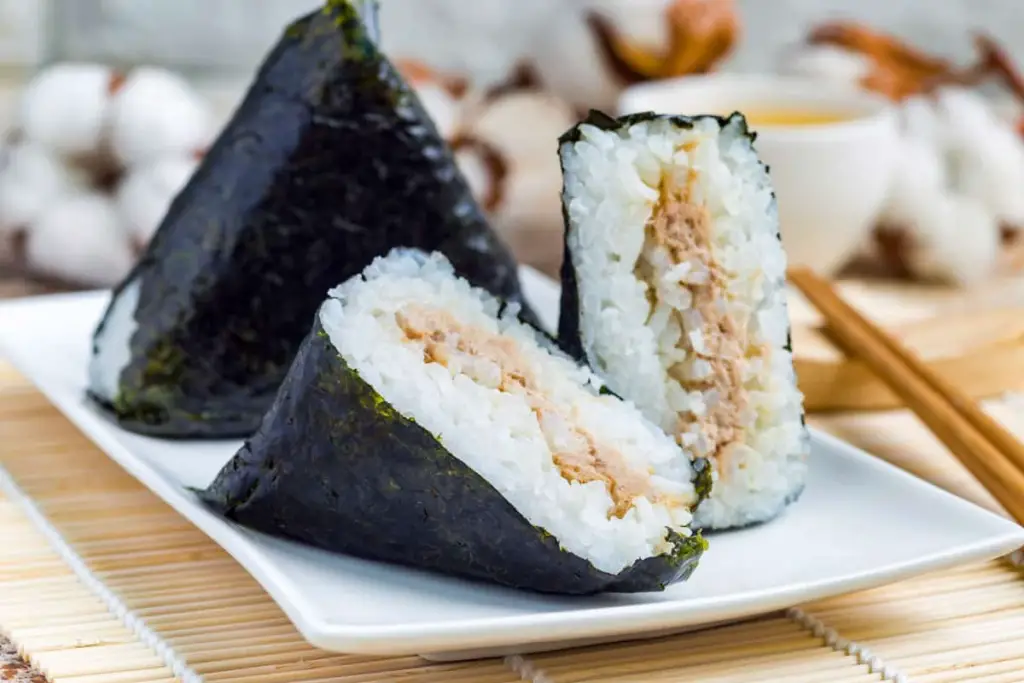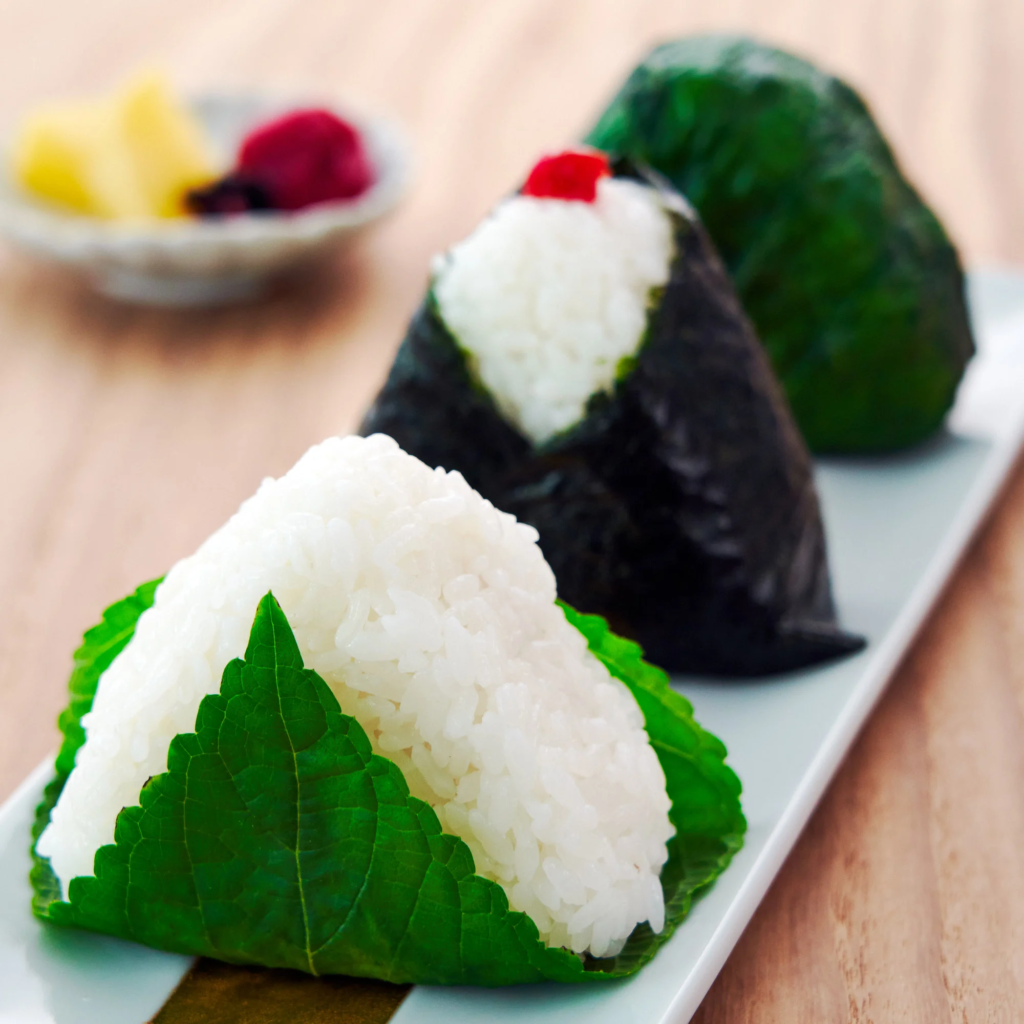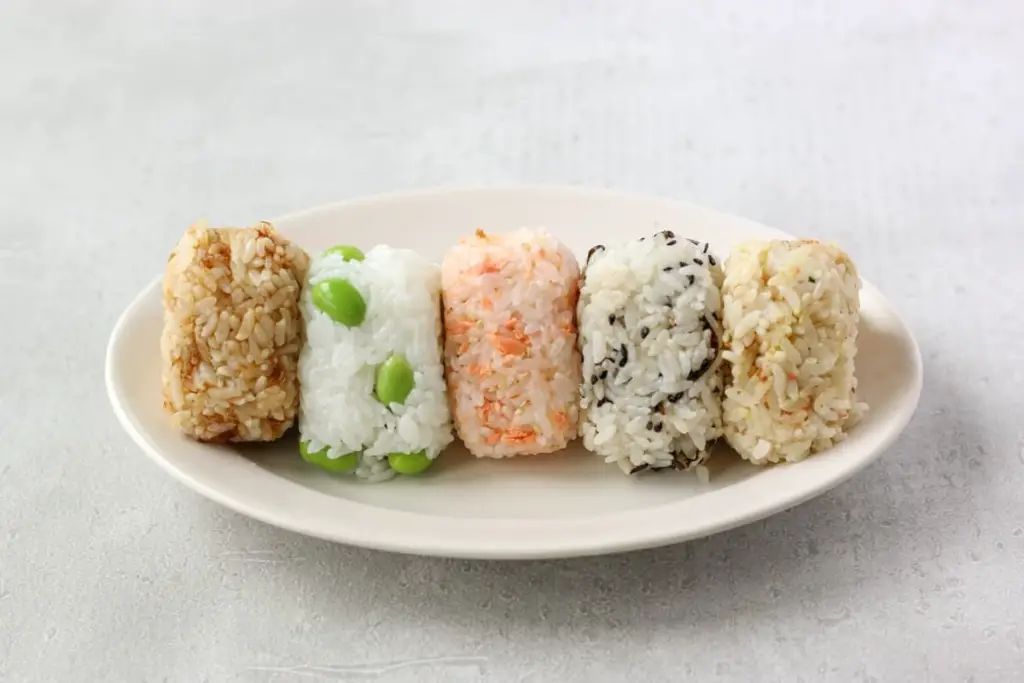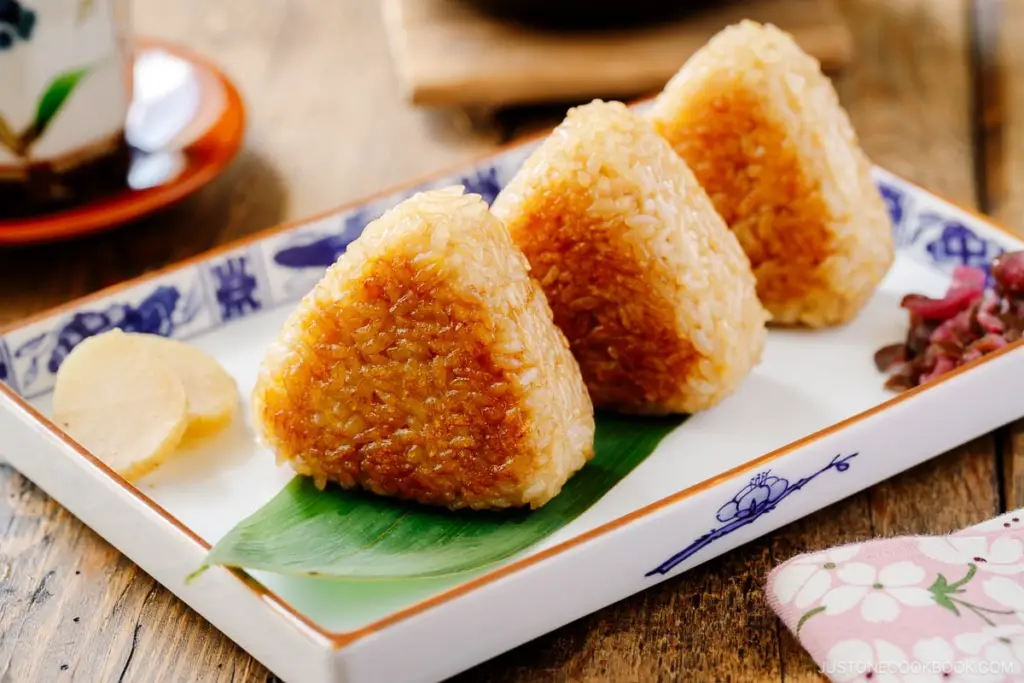Onigiri is a quintessential Japanese snack that has captured the hearts of food enthusiasts worldwide. These rice balls, whether plain rice or lightly salted, come in a multitude of forms, from the traditional grilled onigiri kissed by the smoky flavor of a wire grill to the innovative sprinkling of bonito flakes. Onigiri shapes vary as well, offering an aesthetically pleasing and delicious experience.
Explore the versatility of onigiri as we uncover the types of onigiri you should know about. Each type tells a unique story, whether it’s a plain onigiri or a creatively wrapped piece showcasing the diversity of Japanese cuisine.
What is Onigiri?

Onigiri, at its core, is a staple of Japanese cuisine, a simple yet satisfying snack made from steamed rice formed into various shapes and often wrapped with nori. To mold the onigiri, one must wet their hands to prevent sticking, allowing the rice to be shaped without hassle. Generally, onigiri takes the form of a triangle. However, there is no limit to your creativity here, and you can mold it to any shape you want.
With a plethora of onigiri fillings ranging from pickled fruits to savory fish and the use of distinct Japanese ingredients, onigiri offers a taste of Japan’s rich culinary tradition. If you are interested in learning how to make onigiri, we have a complete guide for you.
Types of Onigiri
Here are the types of onigiri you should know about:
1. Plain Onigiri

For fans of Japanese food seeking simplicity, plain onigiri is a testament to the natural flavors of its ingredients. These balls of steamed, lightly salted rice serve as a canvas for the subtle taste of high-quality, Japanese short-grain rice. Often enjoyed on its own or accompanied by a light meal, plain onigiri is a beloved classic in Japanese cuisine.
Simplicity does not equate to blandness, as each plain onigiri offers a delicate taste that is both comforting and satisfying. This is one of the types of onigiri that is a staple for any fan of Japanese food and acts as the foundation for the more elaborate onigiri varieties that are cherished in Japan and beyond.
2. Filled, Nori Covered Onigiri

Filled onigiri elevate the humble rice ball by incorporating a surprise center of flavorful fillings, all encased in a crisp nori seaweed sheet. The contrast of textures and the burst of taste from the filling make this onigiri a popular choice for a quick and satisfying snack. From tangy pickled plum rice balls to savory tuna salad, each bite is an adventure.
The nori seaweed not only adds an umami-rich dimension but also serves as a convenient wrapper for on-the-go consumption. Whether it’s a filling of salted salmon, spicy cod roe, or mustard greens, filled onigiri brings the essence of Japanese cuisine to your fingertips.
3. Onigiri With Alternate Wrappings

Moving beyond nori, alternate wrappings for onigiri open up a realm of creativity and taste. From shiso leaves imparting a fresh, herbaceous note to the use of sesame oil for a nutty fragrance, these wrappings enhance the overall flavor profile of different types of onigiri. Such variations not only add to the sensory experience but also cater to the diverse preferences of onigiri enthusiasts.
Onigiri with alternate wrappings is a testament to the adaptability and innovation within Japanese cuisine. By experimenting with different ingredients for wrappings, the possibilities for new and exciting onigiri creations are endless, offering a delightful twist on the traditional snack.
4. Mixed-Rice Onigiri

Mixed-rice onigiri, one of the best types of onigiri, caters to fans of Japanese food who appreciate a harmonious blend of flavors and textures in their snack. These onigiri are made with rice mixed with various ingredients like wakame seaweed, dried kelp, or salmon flakes, offering a more complex taste profile with each bite. The mixed components provide bursts of flavor, elevating the rice ball from a simple snack to a gourmet treat.
Whether it’s for a picnic, a quick lunch, or as an accompaniment to tea, mixed-rice onigiri is a versatile option that can satisfy both hunger and the quest for a flavorful, nutritious meal. They are a celebration of the rich tapestry of tastes found within Japanese cuisine.
5. Grilled Onigiri (Yaki Onigiri)

Yaki onigiri, or grilled onigiri, is a delectable variation in types of onigiri where the rice balls are lightly brushed with soy sauce or miso and then grilled until crispy. The grilling process imparts a smoky flavor and a crunchy texture to the basic onigiri, making it an irresistible treat. These types of onigiri can be filled with a variety of fillings, such as salted salmon, negi miso, or tuna mayo, adding depth to the already flavorful snack.
Whether cooked over a wire grill or pan-fried, yaki onigiri serves as a hearty choice within Japanese cuisine. The grilled exterior, coupled with a warm, savory center, makes for a comforting meal, especially when enjoyed with a cup of green tea. Yaki onigiri holds a special place in the hearts of those who crave a toasty, savory spin on the traditional rice ball.
6. Sprinkled Onigiri

Sprinkled onigiri are a visually appealing and flavorful variety, where the rice ball is adorned with a dusting of various toppings. A popular choice is the inclusion of a shiso leaf, which adds a distinct and refreshing flavor that compliments the rice. This type of onigiri is perfect for those who enjoy a burst of flavor with every bite.
The simplicity of sprinkled onigiri belies the complexity of tastes they can offer. These types of onigiri are easy to prepare and make for a delightful snack or part of a meal, providing a quick way to enjoy the essence of Japanese flavors without the need for a filling.
7. The Visible-Inside Onigiri

The visible-inside onigiri is a visually striking variety where the filling is not hidden within the rice but showcased at the center for an appetizing presentation. The design of these different types of onigiri allows for an immediate impression of the flavor to come, inviting a bite that delivers on both taste and aesthetics.
This style of onigiri is not only pleasing to the eye but also offers a direct taste experience, as the filling is immediately encountered upon the first bite. It’s a delightful way to appreciate the variety of flavors that onigiri can encapsulate, making every piece a small work of edible art.
8. Onigirazu

Onigirazu represents a modern twist on the traditional onigiri, where rice and fillings are layered and wrapped with a sheet of nori, resembling a sandwich. This method allows for more substantial fillings and is perfect for those who want a more filling snack. To make onigiri, one must mold the onigiri into a ball shape, then fold the nori over the rice to secure everything in place.
With onigirazu, the possibilities are nearly endless, as a wide range of ingredients can be used to cater to different tastes. It’s an innovative way to enjoy onigiri, combining the convenience of a sandwich with the flavors of traditional Japanese cuisine.
Frequently Asked Questions
What does onigiri taste like?
Onigiri taste can vary widely, depending on the fillings and seasonings used. Generally, they offer a subtle, savory flavor that highlights the natural taste of the steamed rice and the umami from the nori and fillings. Onigiri can range from plain and mild to bold and piquant, each promising a unique experience.
Should onigiri be served hot or cold?
Onigiri are traditionally served at room temperature, making them an ideal portable snack. However, they can also be enjoyed slightly warmed, particularly in the case of grilled onigiri, which brings out a richer flavor and aroma. The serving temperature often depends on personal preference and the type of onigiri.
Can you make onigiri with regular rice?
While traditional onigiri is made with Japanese short-grain rice due to its sticky texture, it is possible to make onigiri with regular rice as long as it has a sufficient level of stickiness to hold its shape. Slightly overcooking the rice or choosing a stickier variety can help achieve the desired consistency.
Wrapping Up
Onigiri, a staple of Japanese cuisine, has proven to be a versatile and filling meal that can cater to a wide range of tastes. Whether you crave something sour and salty or prefer the simplicity of a plain rice ball, there is an onigiri for every palate. With options ranging from a classic nori-wrapped snack to an inventive onigirazu, different types of onigiri can satisfy both traditional and modern food enthusiasts.

